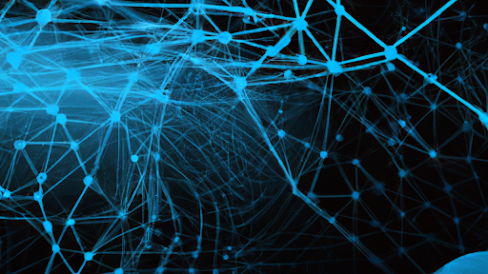In the ever-evolving landscape of machine learning, Graph Neural Networks (GNNs) have emerged as a powerful paradigm that holds immense potential for revolutionizing various applications. Traditional machine learning models, while effective in many tasks, often fall short when dealing with complex relationships and dependencies inherent in non-tabular data. This is where GNNs step in, offering a promising avenue for capturing intricate patterns in data that were previously challenging to model. In this blog post, we will delve into the fundamentals of Graph Neural Networks, explore their applications, and discuss their role in shaping the future of machine learning.
 |
| Graph Neural Networks |
Understanding Graph Neural Networks
Graph Neural Networks, or GNNs, belong to the family of neural networks designed to operate on graph-structured data. Graphs, composed of nodes and edges, provide a versatile framework for representing relationships between entities. Unlike traditional neural networks that process fixed-size vectors or sequences, GNNs operate on graph-structured data, enabling them to capture dependencies and interactions among interconnected elements.
At the core of GNNs lies the ability to learn and propagate information across the graph. This is achieved through a series of iterative operations, where each node aggregates information from its neighbors, allowing the network to gain a holistic understanding of the graph's structure. The key components of a GNN include node embeddings, edge embeddings, and the propagation mechanism, which collectively enable the model to extract meaningful representations from complex relationships.
Applications of Graph Neural Networks
Graph Neural Networks have demonstrated remarkable success across a wide range of applications, showcasing their versatility and effectiveness in handling complex data structures. Here are some prominent areas where GNNs have made significant contributions:
Social Network Analysis:
GNNs excel in capturing social relationships and community structures within social networks. By considering individuals as nodes and their connections as edges, GNNs can predict relationships, detect communities, and uncover hidden patterns in large-scale social graphs.Recommendation Systems:
Recommender systems benefit from GNNs by modeling user-item interactions as a graph. This approach allows the network to learn personalized representations for users and items, leading to more accurate and context-aware recommendations.Biological and Chemical Research:
GNNs have shown promise in drug discovery, protein-protein interaction prediction, and bioinformatics. By representing molecules or biological entities as graphs, GNNs can capture the underlying structures and relationships crucial for understanding complex biological systems.Fraud Detection:
The interconnected nature of financial transactions makes them well-suited for graph representation. GNNs can identify patterns indicative of fraudulent activities by analyzing the graph structure of transactions and detecting anomalous patterns.Knowledge Graphs:
GNNs play a pivotal role in enhancing knowledge graph embeddings and reasoning. By leveraging the graph structure of knowledge bases, GNNs can improve entity and relation embeddings, facilitating more accurate information retrieval and question answering.
Challenges and Future Directions
While Graph Neural Networks have shown remarkable success, they are not without challenges. The interpretability of GNNs, understanding their decision-making processes, and scalability to handle large graphs are among the current research frontiers. Additionally, adapting GNNs to dynamic graphs where the structure evolves over time poses an interesting avenue for exploration.
Interpretability:
Understanding how GNNs arrive at specific predictions remains a challenge. Interpretable GNN architectures and methods for extracting meaningful insights from learned representations are areas of active research.Scalability:
As the size of graphs increases, scalability becomes a concern. Efficient algorithms and parallelization techniques are crucial for enabling GNNs to handle large-scale graphs in real-world scenarios.Dynamic Graphs:
Adapting GNNs to dynamic graphs, where edges and nodes change over time, is an evolving area of research. Applications such as temporal social network analysis and dynamic recommendation systems could greatly benefit from advancements in this direction.Graph Representation Learning:
Improving the generalization capabilities of GNNs, especially in scenarios with limited labeled data, is an ongoing challenge. Developing robust graph representation learning techniques is essential for the widespread adoption of GNNs across diverse domains.
Conclusion
Graph Neural Networks represent a paradigm shift in machine learning, offering a powerful framework for modeling complex relationships inherent in diverse datasets. From social network analysis to drug discovery, GNNs have showcased their efficacy in a myriad of applications, paving the way for innovative solutions to longstanding challenges.
As researchers continue to unravel the mysteries of GNNs and address existing challenges, the future of machine learning looks increasingly interconnected. The ability of GNNs to capture and leverage intricate relationships within data holds the promise of unlocking new possibilities in fields ranging from healthcare to finance.
In conclusion, Graph Neural Networks are not just a tool in the machine learning toolkit; they are a gateway to a new era of understanding and harnessing the power of interconnected data. As we stand at the cusp of this exciting journey, the exploration of Graph Neural Networks is poised to redefine the landscape of machine learning in ways that were once deemed unimaginable.
